
Category: Album
Title: A Night at the Opera
Artist: Queen
Released: November 21, 1975
Genres: Art Rock, Hard Rock, Opera Rock, Progressive Rock, Rock
Album Background
Release Date and Label
A Night at the Opera was released on November 21, 1975, by EMI Records in the United Kingdom and by Elektra Records in the United States. This album marked a significant milestone in Queen’s career, elevating them to international fame.
Artist Context
At the time of the album’s creation, Queen had already released three albums but had yet to achieve widespread commercial success. They were determined to create an album that would establish them as a major force in rock music. The band was experiencing internal pressures and financial struggles, making the success of A Night at the Opera crucial for their future.
Concept and Inspiration
Themes and Messages
The album’s themes are eclectic, reflecting a wide range of influences and styles. It includes songs about love, existential contemplation, and fantastical narratives. The album title and several tracks are inspired by the Marx Brothers’ film A Night at the Opera, indicating the band’s interest in blending high art with popular culture.
Inspiration
Queen drew inspiration from a variety of sources, including classical music, opera, and contemporary rock. The band’s ambition was to push the boundaries of rock music, incorporating complex arrangements and diverse musical influences. Personal experiences and the desire to innovate were significant driving forces behind the album’s creation.
Writing and Recording Process
Songwriting and Recording
The songwriting process for A Night at the Opera was highly collaborative, with contributions from all four band members. Freddie Mercury, Brian May, Roger Taylor, and John Deacon each brought their unique styles and ideas to the project. The recording sessions were intense and lengthy, taking place over several months in various studios across the UK.
Studios Used
Key studios used for recording included Rockfield Studios in Wales, Lansdowne Studios, Sarm Studios, Roundhouse Studios, and Olympic Studios in London.
Notable Collaborations
The album did not feature external collaborations, but it showcased the band’s versatility and the members’ individual talents. Producer Roy Thomas Baker played a crucial role in shaping the album’s sound.
Production Details
Producers and Sound
Roy Thomas Baker: As the album’s producer, Roy Thomas Baker was instrumental in achieving its distinctive sound. He worked closely with the band to experiment with studio techniques, including multi-tracking and overdubbing.
Sound and Musical Style
The album is renowned for its diverse musical styles, ranging from hard rock and progressive rock to opera and vaudeville. It features elaborate production techniques, such as multi-layered vocals, complex arrangements, and the extensive use of overdubs. This eclectic mix of styles and the ambitious production helped to create a unique and groundbreaking sound.
Track-by-Track Analysis
-
Track Listing:
- “Death on Two Legs (Dedicated to…)”
- “Lazing on a Sunday Afternoon”
- “I’m in Love with My Car”
- “You’re My Best Friend”
- “’39”
- “Sweet Lady”
- “Seaside Rendezvous”
- “The Prophet’s Song”
- “Love of My Life”
- “Good Company”
- “Bohemian Rhapsody”
- “God Save the Queen”
-
Key Tracks:
- “Bohemian Rhapsody”: This iconic track is the centerpiece of the album, featuring a blend of rock, opera, and ballad sections. Its innovative structure and production have made it one of the most famous songs in rock history.
- “You’re My Best Friend”: Written by John Deacon, this song became one of Queen’s biggest hits, known for its catchy melody and heartfelt lyrics.
- “Love of My Life”: A tender ballad written by Freddie Mercury, this song is a fan favorite and a staple of Queen’s live performances.
- “The Prophet’s Song”: An epic track written by Brian May, featuring complex arrangements and vocal harmonies, showcasing the band’s progressive rock influences.
Awards and Nominations
Awards and Nominations
While A Night at the Opera did not receive many awards at the time of its release, its impact and legacy have been recognized over the years. The album has been included in numerous “greatest albums of all time” lists by various music publications.
Sales and Charts
UK Albums Chart: The album reached No. 1 on the UK Albums Chart, where it stayed for four weeks.
Billboard 200: In the United States, the album peaked at No. 4 on the Billboard 200 chart.
Certifications: A Night at the Opera has been certified Platinum in the US and UK, reflecting its enduring popularity and commercial success.
Impact and Legacy
Influence and Long-term Impact
A Night at the Opera is considered a landmark in rock music, influencing countless artists and bands. Its innovative production techniques and genre-blending style set a new standard for what could be achieved in rock music.
The album cemented Queen’s reputation as one of the most creative and ambitious bands of their time. Its success allowed the band to continue experimenting with their music, leading to more groundbreaking albums in the future.
Conclusion
Summary
A Night at the Opera is a seminal album that showcases Queen’s extraordinary talent and ambition. Its eclectic mix of styles, innovative production, and memorable tracks have made it a classic in the annals of rock music. The album’s success marked a turning point in Queen’s career, establishing them as one of the biggest bands in the world.
Final Thoughts
Personally, A Night at the Opera represents the epitome of artistic creativity and musical innovation. The album’s ability to blend diverse genres and push the boundaries of rock music makes it a timeless masterpiece. Its influence on subsequent generations of musicians and its enduring popularity among fans highlight its significance in music history. A Night at the Opera is not just an album; it is a testament to the power of music to inspire, challenge, and entertain.











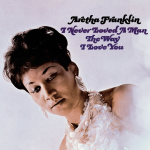

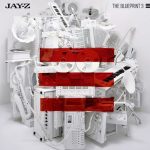

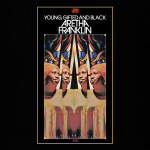
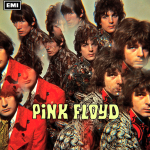

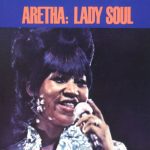
Leave a Reply